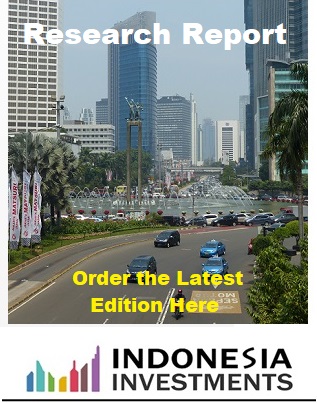Consumer Price Index Indonesia: Inflation at 0.28% in July 2018
Indonesia's inflation rate was recorded at 0.28 percent month-on-month (m/m) in July 2018, slightly below estimates. Still, the country's annual inflation rate accelerated to 3.18 percent (y/y) in July, from 3.12 percent in the preceding month.
Suhariyanto, Head of Statistics Indonesia (BPS) - the agency that releases the inflation data -, said July inflation was under control last month because the inflation peak that was caused by the Ramadan and Lebaran period (when consumer demand traditionally rises significantly) is over. Thus, prices of goods have begun to turn normal. This explains why Indonesia's monthly inflation rate fell from 0.59 percent (m/m) in June to 0.28 percent (m/m) in July.
Despite modest overall inflation, two commodities experienced marked inflation in July, namely: chicken eggs and chicken meat. They contributed significantly to a still rather high foodstuffs expenditure group inflation rate of 0.86 percent (m/m) in July (despite overall easing food prices after the aforementioned Islamic festivities).
Also the new school year brings inflationary pressures to Indonesia. The education, recreation and sports expenditure group rose 0.83 percent (m/m) in July, mainly because households needed to pay tuition fees at elementary, junior and senior high schools.
Meanwhile, rising fuel prices (specifically the price of Pertamax which was raised per 1 July 2018) also contributed to Indonesian inflation in July.

It is also worthy noting that transportation costs deflated markedly after the mudik period ended. Mudik refers to the local tradition that sees millions of Indonesians travel back to their places of origin - in the Lebaran period - to spend a couple of days with their families. The exodus and influx of millions of people into the cities and regional areas give rise to higher transportation costs. In July, however, transportation rates turned back normal.
Indonesia's July Inflation per Expenditure Group:
• Foodstuffs; +0.86 percent (m/m)
• Processed food, beverages, cigarette and tobacco; +0.45 percent (m/m)
• Housing, water, electricity, gas and fuel; +0.16 percent (m/m)
• Clothing; +0.29 percent (m/m)
• Health; +0.27 percent (m/m)
• Education, recreation and sports; +0.83 percent (m/m)
• Transportation, communication and financial services; -0.65 percent (m/m).
Read also: Analysis of Inflation in Indonesia
Indonesia's annual core inflation rate, which excludes government-controlled and volatile food prices, grew more than expected to 2.87 percent (y/y) in July.
Inflation in Indonesia:
| Month | M/M Growth 2018 |
| January | 0.62% |
| February | 0.17% |
| March | 0.20% |
| April | 0.10% |
| May | 0.21% |
| June | 0.59% |
| July | 0.28% |
| Year-to-Date | 2.18% |
Headline Consumer Price Index of Indonesia:
| Month | M/M Growth 2013 |
M/M Growth 2014 |
M/M Growth 2015 |
M/M Growth 2016 |
M/M Growth 2017 |
| January | 1.03% | 1.07% | -0.24% | 0.51% | 0.97% |
| February | 0.75% | 0.26% | -0.36% | -0.09% | 0.23% |
| March | 0.63% | 0.08% | 0.17% | 0.19% | -0.02% |
| April | -0.10% | -0.02% | 0.36% | -0.45% | 0.09% |
| May | -0.03% | 0.16% | 0.50% | 0.24% | 0.39% |
| June | 1.03% | 0.43% | 0.54% | 0.66% | 0.69% |
| July | 3.29% | 0.93% | 0.93% | 0.69% | 0.22% |
| August | 1.12% | 0.47% | 0.39% | -0.02% | -0.07% |
| September | -0.35% | 0.27% | -0.05% | 0.22% | 0.13% |
| October | 0.09% | 0.47% | -0.08% | 0.14% | 0.01% |
| November | 0.12% | 1.50% | 0.21% | 0.47% | 0.20% |
| December | 0.55% | 2.46% | 0.96% | 0.42% | 0.71% |
| Total | 8.38% | 8.36% | 3.35% | 3.02% | 3.61% |
Source: Statistics Indonesia (BPS)
Inflation in Indonesia and Central Bank (BI) Target:
| 2014 | 2015 | 2016 | 2017 | 2018 | |
| Inflation (annual % change) |
8.4 | 3.4 | 3.0 | 3.6 | |
| BI Target (annual % change) |
4.5 | 4.0 | 4.0 | 4.0 | 3.5 |
| 2008 | 2009 | 2010 | 2011 | 2012 | 2013 | |
| Inflation (annual % change) |
9.8 | 4.8 | 5.1 | 5.4 | 4.3 | 8.4 |
| BI Target (annual % change) |
5.0 | 4.5 | 5.0 | 5.0 | 4.5 | 4.5 |
Source: Bank Indonesia

